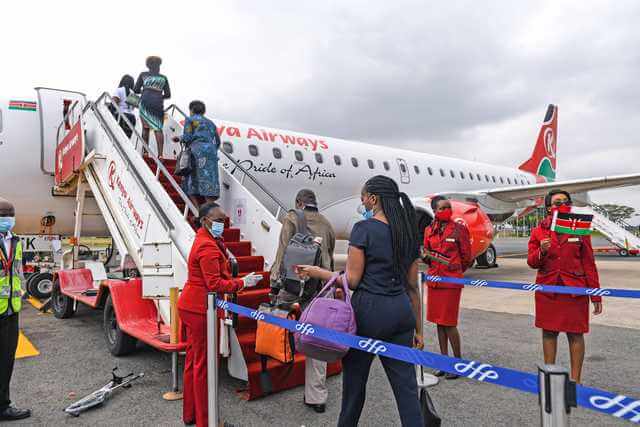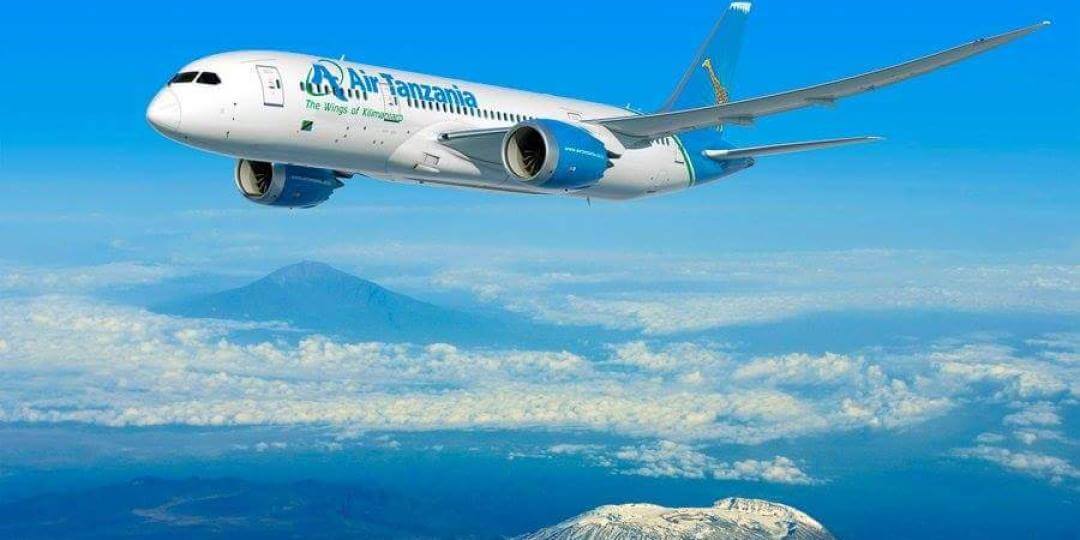Three national airlines in the region — Kenya Airways, Uganda Airlines and Air Tanzania, — are flying in the loss-making zones and could remain in trouble for years to come, experts have warned.
For instance, Uganda Airlines, in the news for the past fortnight as a parliamentary oversight committee probed its operations, could remain trapped in the loss position for decades, experts on airline business have observed.
Sources say the airline is expected to report further losses for the 2021/22 financial year that ended in June. The losses, though anticipated at this stage of the business, will be well over initial projections, driven by a mismatch in revenue growth and cost escalation as the airline launched its first intercontinental flight to Dubai last October, and a sharp rise in fuel costs as the air transport industry restarted globally.

The parliamentary probe revealed that the airline made losses worth Ush164 billion ($43 million) during 2020/21 fiscal year. That figure represented a 37 percent deviation off projections for the year. It is again expected to be off-target by 53 percent in the numbers that will be reported for the financial year that ended last June.
According to its embattled chief executive Jenifer Bamuturaki, however, the absolute loss is much lower than the reported Ush164 billion ($43 million) because Ush77.4 billion ($20 million) was the book value for depreciation on aircraft and not actual cash outflow.
“When you factor in the Ush14 billion ($3.7 million) that went back to the Treasury as taxes, our actual loss position comes to around Ush86 billion ($22 million),” Ms Bamuturaki told The EastAfrican. She said the country should brace for a longer short-run curve because new routes such as Guangzhou, expected to be launched in the next couple of months, followed by London and Mumbai in the first quarter of calendar 2023, will drive up costs.
“We are riding a seesaw. Every time we launch a new route, it takes us back along the cost line because until it matures, it will be a drain on revenues from the existing routes,” she said.
The CEO anticipates a 38 percent increase in costs in 2023, followed by a 67 percent reduction in 2022. The gains are expected from a rationalised network that should see increased traffic and aircraft utilisation.
The airline is operating only half of the 21 routes — 18 regional and three intercontinental — that it should have been operating by now. Passenger numbers doubled to more than 217,000 in 201/22 and are expected to cross the 0.5 million mark on the introduction of Guangzhou and London routes.
Independent observers of the Uganda Airlines say its current financial position is not only a result of the operating environment, made difficult by the Covid-19 disruptions but also because of structural issues.
“It does not matter who you bring to manage that airline, it will stay in the loss position for the next 20 years until the structure of its balance sheet is addressed,” said retired airline administrator Fred Ochieng Obbo.
According to him, the primary problem is that, rather post the cost of aircraft acquisition as shareholder equity, that value continues to be reflected on one side of the balance sheet as assets and on the other as debt.
“There’s no way you are going to escape an accounting loss with such a balance sheet and the long gestation period before routes break even,” Mr Obbo said.
According to Ms Bamuturaki, however, the contradiction will be resolved when the share capital of the company is revised upwards. The company was registered with a capital of 100 shares valued at Ush2 million ($525) each, equivalent to Ush200 million ($52,529). Total government investment is now in excess of Ush1.6 trillion ($420 million) but it is not reflected as equity.
“So, for now, we are recording that money as share application fees and I don’t see it imposing long-term drag on our accounts,” she said.
But it is not only Uganda Airlines that is fluttering in loss territory. The region’s national airlines are facing turmoil even as state owners refuse to let go and continue pumping in more cash.
The airlines have faced rising global fuel prices, uncompetitiveness, revenue losses and reduced passenger numbers as most people opt out of expensive travel.
Kenya’s national carrier Kenya Airways (KQ), for example, this week reported a loss of Ksh9.89 billion ($82.4 million) for the half-year to June 30, 2022. It was a slight year-on-year improvement compared with a loss of Ksh11.49 billion ($95.8 million) reported over a similar period in 2021.
This is the ninth consecutive half-year loss for an airline that has benefited from several state bailouts, the latest being Ksh20 billion ($166.7 million) in a supplementary budget passed by the 12th parliament.

Air Tanzania has continued to tout an ambitious plan for international routes expansion, with new links to West Africa come 2023, despite being flagged twice in recent government audit reports for continuing to rack up huge operational losses. According to managing director Ladislaus Matindi, plans are being finalised to introduce flights from the airline’s Dar es Salaam hub to Lagos, Nigeria, and Accra, Ghana, “once we have more planes on our current fleet.”
It will be the latest chapter in the national carrier’s renaissance strategy after resuming flights to Guangzhou, China, in July, but comes against the backdrop of the latest findings by the Controller and Auditor General (CAG) that ranked Air Tanzania sixth among government firms with biggest debts in the 2020/2021 financial year.
In 2021, CAG Charles Kichere, said ATCL had incurred losses of Tsh150 billion ($64.6 million) over five years, including Tsh60 billion ($25.8 million) in the financial year under review.
In his audit report for the financial year 2019/2020 and the Prevention and Combating of Corruption Bureau (PCCB) report for 2019/2020 to President Samia Suluhu Hassan, he revealed the company had incurred Tsh12.4 billion ($5.3 million) in interest in the financial year 2019/21 on debts of Tsh45 billion ($19.4 million) accrued over five years.
Between March and June 2020, ATCL had been charged Tsh15.4 billion ($6.6 million) for aircraft leases while not flying commercially due to Covid-19 restrictions.
Air Tanzania’s entire fleet — two Boeing 787-8s, two A220-300s, one Dash 8-300, five Dash 8-400s, one Fokker 50, and one F28-3000 — is leased from TGF, Tanzania Government Flight (Dar es Salaam), a state-owned lessor.
ATCL expects to take in four more new aircraft before the end of next year to ramp up its current fleet of 12.
The additional planes will be another Dash 8-Q400, another Boeing 787-8 Dreamliner, two Boeing 737 Max-9s and one specification-based Boeing 767-300F Freighter.
Former president John Magufuli initiated an expensive revival programme for the then struggling national carrier when he took office in 2015, targeting a boost in tourist numbers.
Despite a massive outlay of over $700 million on new aircraft sanctioned by the Magufuli administration during the five and a half years of his tenure, ATCL’s revival has continued to flounder on rocky ground, a situation exacerbated by the coronavirus pandemic.
Kenya Airways has booked a Ksh5.3 billion ($44 million) loss on hedged foreign exchange differences.
Jet fuel, which was the largest contributor of overheads in the half-year period, pushed overall operating expenses to Ksh53.1 billion ($442.5 million) from Ksh34.6 billion (Ksh288.3 million) in the corresponding period last year.
“These results were affected by the high price of aviation fuel, which is over 65 percent more than last year,” said Michael Joseph, KQ chairman.
Mr Joseph added that the airline would have returned an operating profit of Ksh1.5 billion ($12.5 million) in the half year had the fuel prices not run out of control.
“Fuel costs account for between 10 percent and 12 percent of airline operating costs, and it will shift the operating calculations for any carrier, with Kenya Airways expected to be hardest hit as its fuel takes up an entire quarter of the airline’s expenses,” said Mr Joseph.
According to the African Airlines Association, airlines on the continent are likely to post losses of up to $4.1 billion this year on the back of expensive jet fuel. This is equivalent to 23.4 percent of 2019 revenues. KQ’s losses tripled to $333 million in the 12 months to December 2020 as Covid-19 containment measures cut passenger levels to their lowest level since 1999.
Mr Joseph explained that during the first half of 2022, operations were positively impacted by pent-up demand and the removal of travel restrictions, resulting in a strong and sustained recovery in trading performance compared to a similar period in the prior year.
“The opening of the borders worldwide has led to quick rebounds in some key markets. Lingering travel restrictions in some markets have limited recovery,” said Joseph.
Since the Russia-Ukrainian war in February, 2022, cargo air freight and air tickets charges have increased to match the rise in jet fuel prices, engaging a reverse gear to an industry already struggling with post-Covid-19 recovery.
The International Air Transport Association is confident global airline passenger numbers will reach 83 percent of pre-pandemic figures in 2022, and the aviation industry’s recovery to profitability will be within sight despite ongoing uncertainties. In recent years, Kenya Airways has received a series of government bailouts, including support due to the effects of Covid-19 pandemic.
SOURCE: THE EAST AFRICAN






